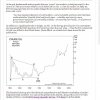Trembling Hand
Can be found on the bid
- Joined
- 10 June 2007
- Posts
- 8,852
- Reactions
- 205
Re: XAO Analysis
Presumably the increase margin is a some kind of attempted to stop manipulation, as uniformed as that is. All that will eventually do is squeeze who ever is the weakest. And pull backs aside. I would bet the Longs have more fire power than the weak and wary shorts.
How are the new regulations squeezing the shorts?
Presumably the increase margin is a some kind of attempted to stop manipulation, as uniformed as that is. All that will eventually do is squeeze who ever is the weakest. And pull backs aside. I would bet the Longs have more fire power than the weak and wary shorts.












